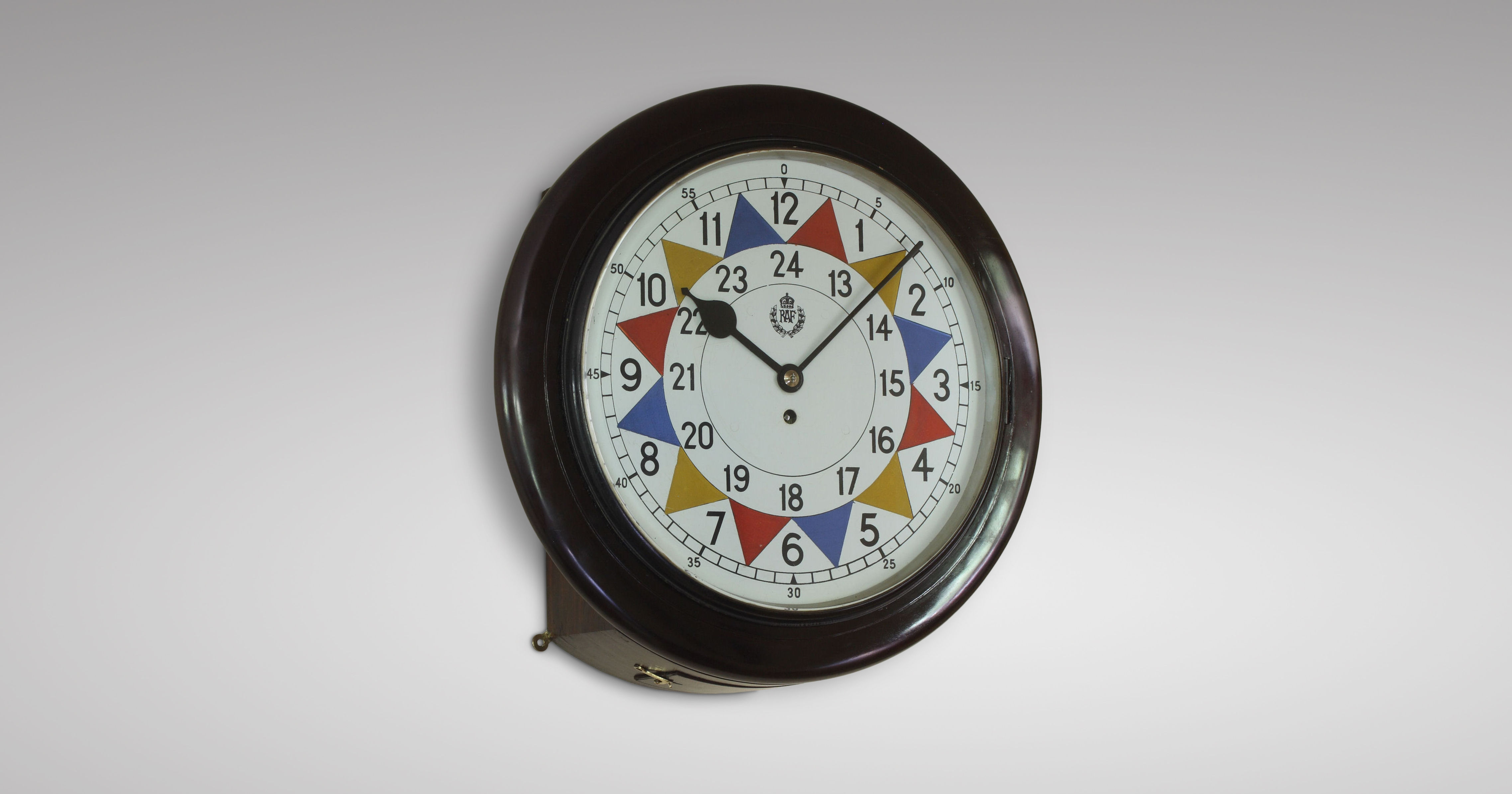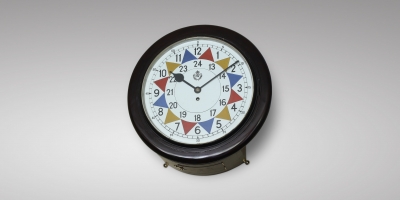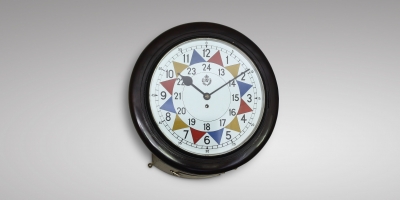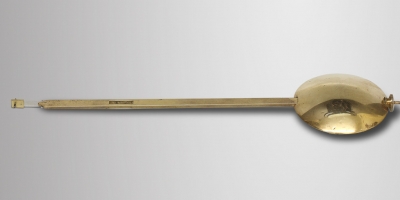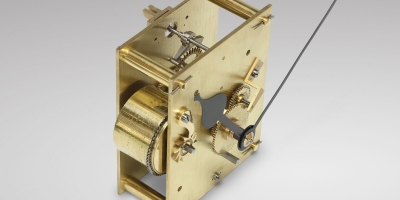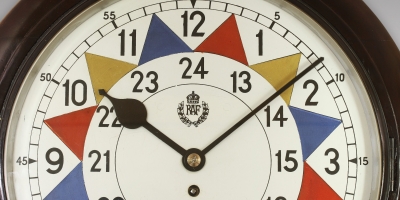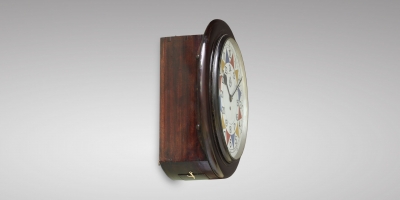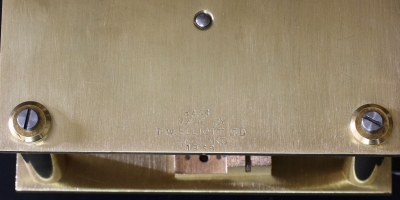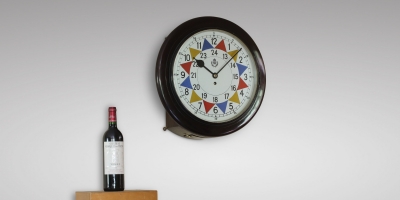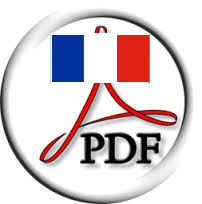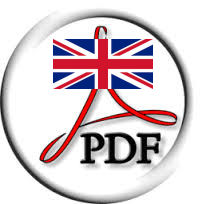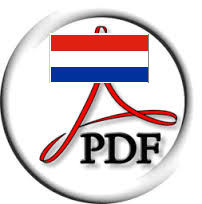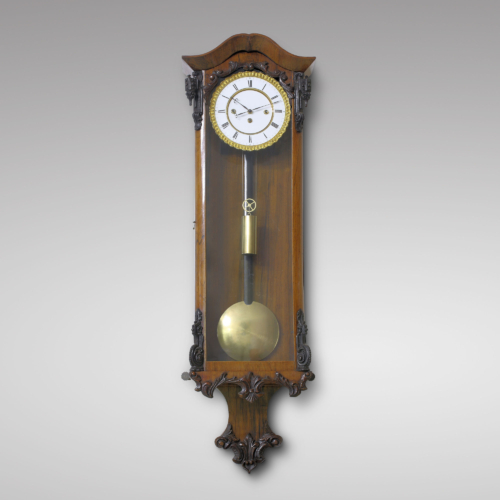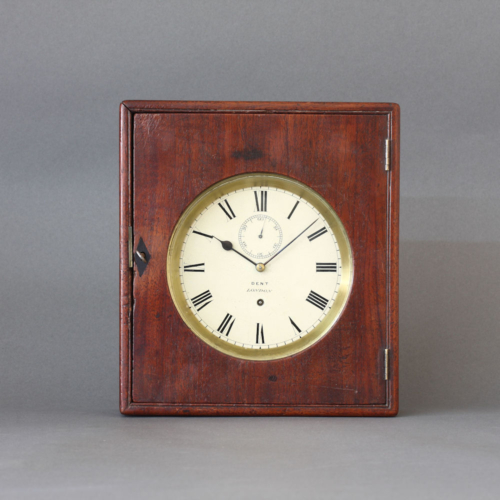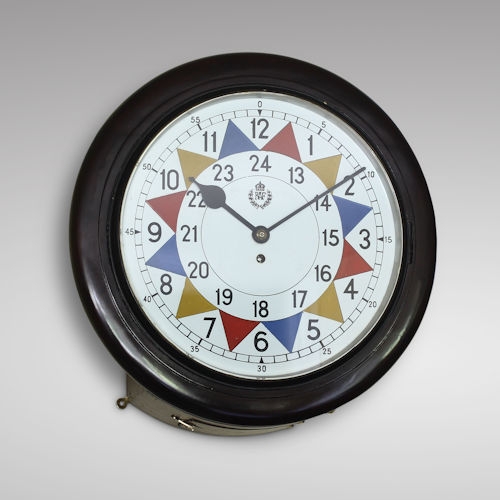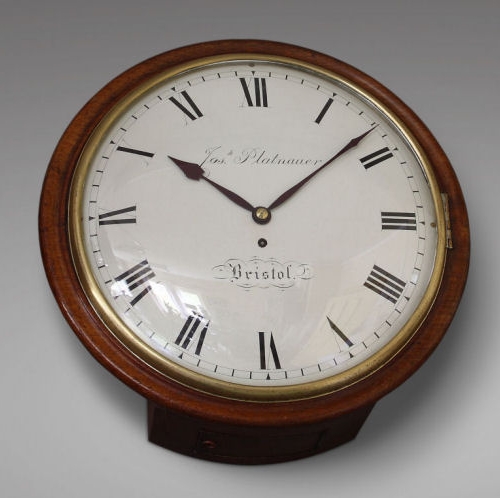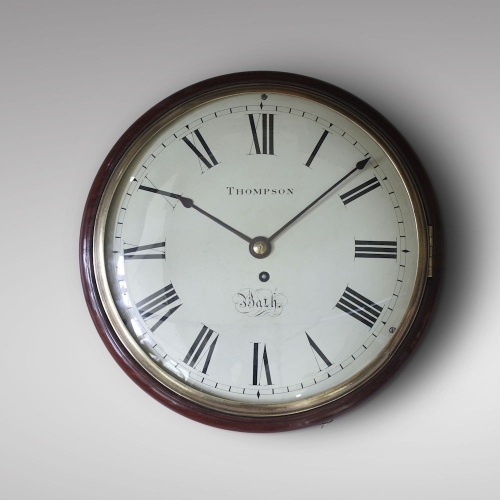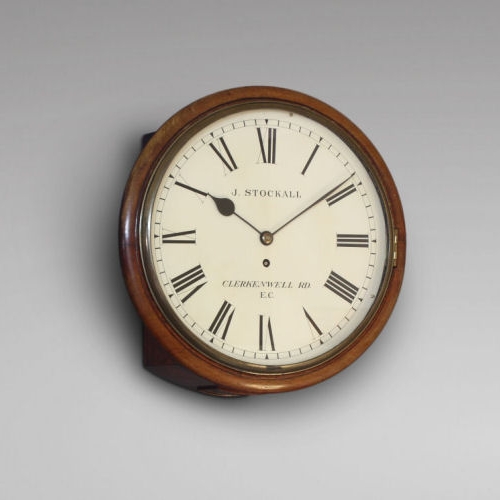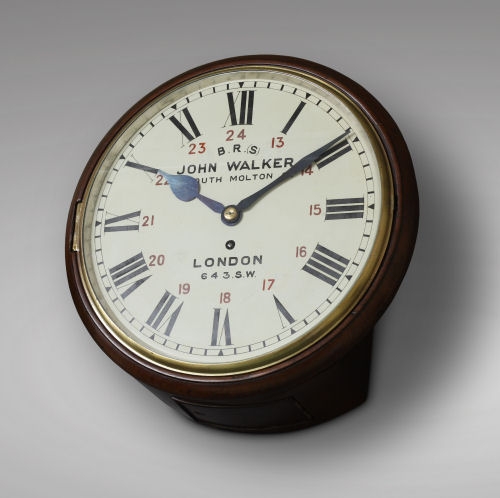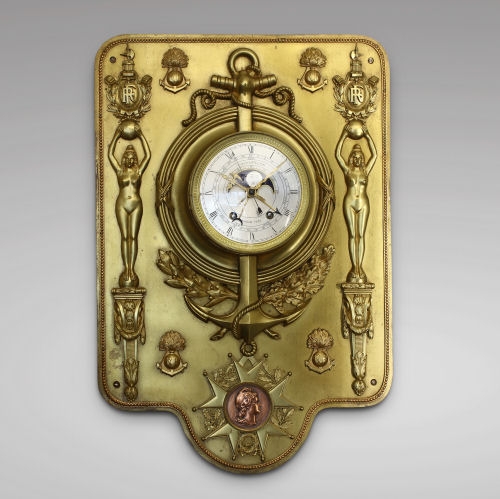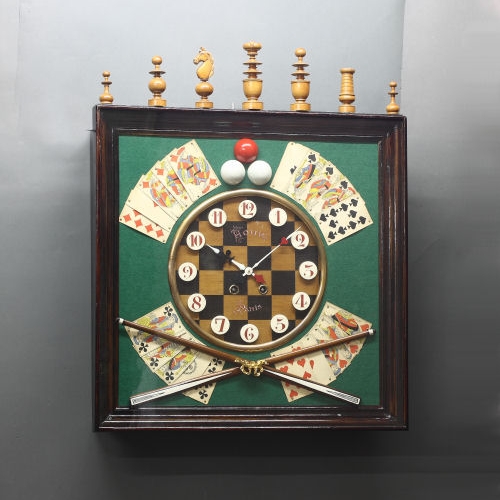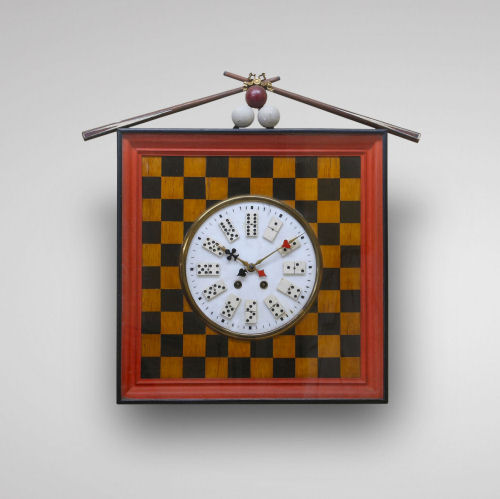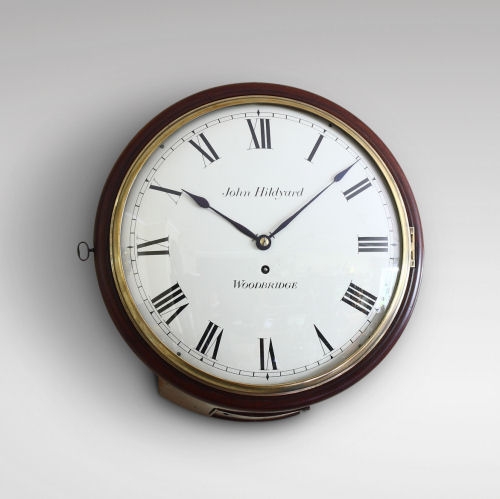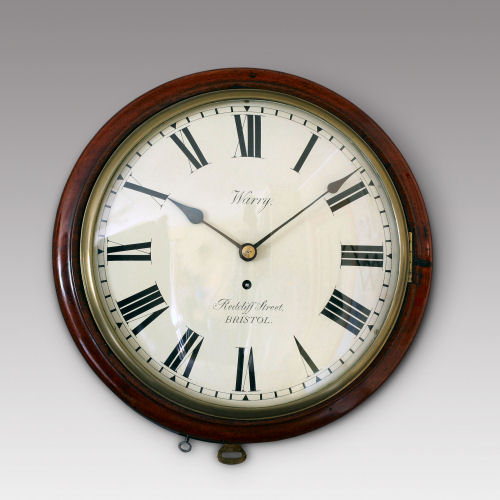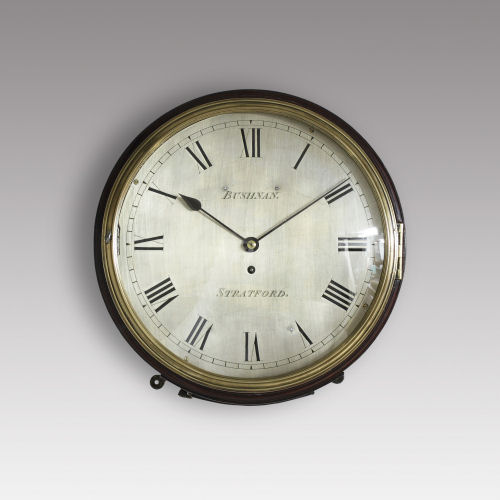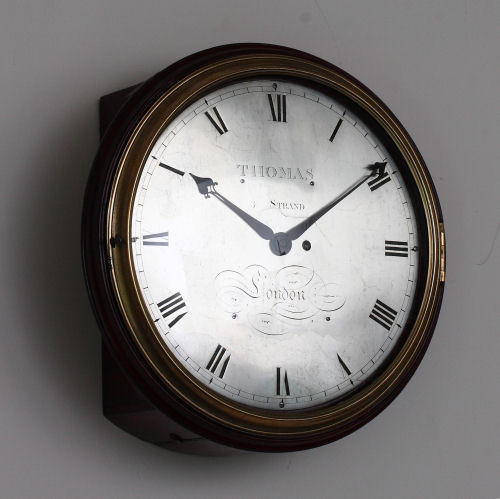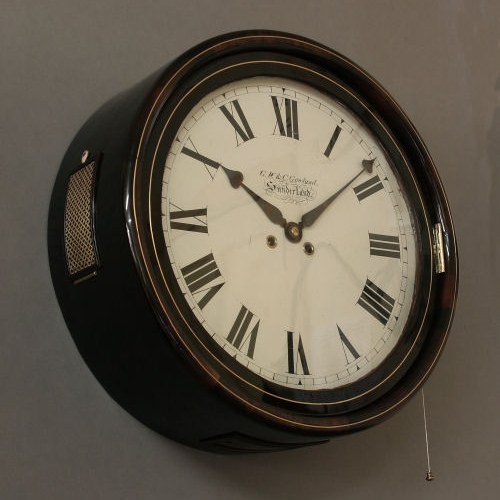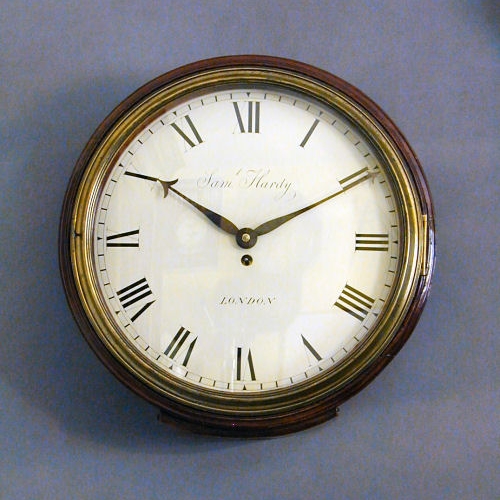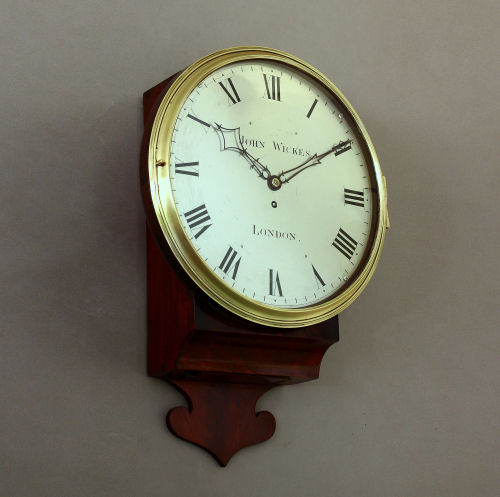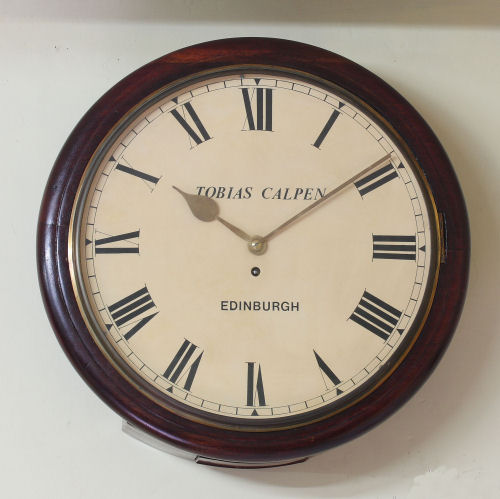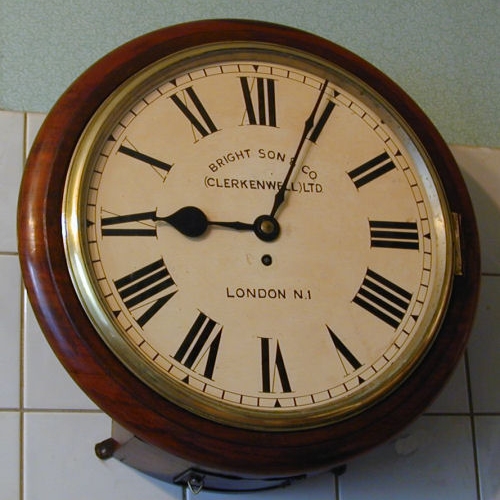Mahogany wall fusee timepiece for the Royal Air Force, "Operations Room Clock", dated and stamped 1938.
Painted flat dial with Arabic numerals for the five minutes on the outer ring, the minute graduations, the twelve hours within the coloured triangles, and the 24 hours on the inner ring. Old style King's Crown RAF Warrant Officer's insignia below the number 24, blued steel hands, cast bezel, painted black outside and silvered inside, turned black tinted mahogany outer with a flat thick bevelled glass. Single chain fusee movement with rectangular plates united by four massive screwed pillars, recoil anchor escapement. Autonomy 8 days.
Originally known as "colour change clocks", they were introduced during the First World War by the Royal Flying Corps in 1917 to monitor the movements of German aircraft. Later, during the Second World War they played a significant role in the Battle of Britain and continued to be used by the Royal Air Force and Royal Observer Corps (ROC) as simple clocks and keepsakes, until the end of the Cold War period.
The Sector Clock was a fundamental part of Ground-controlled interception before modern computerized systems were put in place for airspace control. The clock dial is marked with five-minute red, yellow and blue triangular segments. It has an outer 12-hour ring and an inner 24-hour dial.
Aircraft position was recorded along with the colour of the triangle beneath the minute hand at the time of sighting. This was reported to sector headquarters, where counters of the relayed colour were used to represent each air raid on a large table with a map of the UK overlaid with a British Modified Grid. As the plots of the raiding aircraft moved, the counters were pushed across the map by magnetic "rakes". This system enabled "Fighter Controllers" to see very quickly where each formation was heading and allowed an estimate to be made of possible targets. The age of the information was readily apparent from the colour of the counter. Because of the simplicity of the system, decisions could be made quickly and easily.
It was possible, according to reports from system veterans, to have fighters in the air and on their way to an intercept within five minutes of the initial contact. Without the simple yet elegant time coding system devised by the RAF, the British might not have been so successful in holding control of the skies over Britain during the crucial Battle of Britain as well as later in the war.
Dimensions
External diameter 18 ½ ” (47 cm), dial diameter 14” (36cm), overall depth 7 1/2 ” (19cm)
Maker
T.W.Elliott Ltd: the firm of Elliott’s started in 1886 with James Jones Elliott, having served his apprenticeship with Bateman of Smithfield, naming the company J.J.Elliott Ltd, at Percival St, Clerkenwell. James’ son and successor Frank sold off the name in 1923, amalgamated with the firm Gillett & Johnson Ltd to form the company now known as F.W.Elliott Ltd, taking over all the domestic production from Gillett’s. Frank’s three sons all joined the company, Horace in 1919, Ronald in 1929 and Leonard in 1946.
At the outbreak of WWII in 1939 the production of clocks was temporarily reduced and the factory made test gear and apparatus for Rolls-Royce Merlin engines used on Spitfire aeroplanes. Frank Westcombe Elliott died in 1944, aged 69.
The company still makes quality clocks and is based in Hastings.
Bibliography
Ronald E Rose, English Dial Clocks, Antique’s Collectors’Club, revised and reprinted 2000; Wikipedia; Ned Frederick “The Clock that saved Great Britain”
Price
€ 9.500
